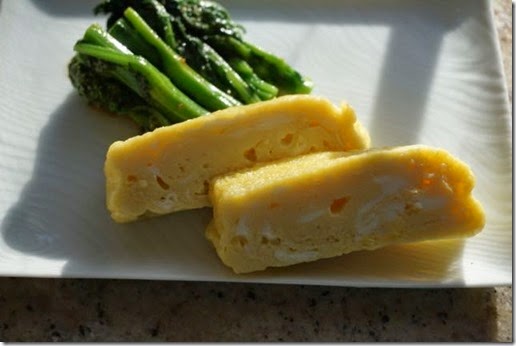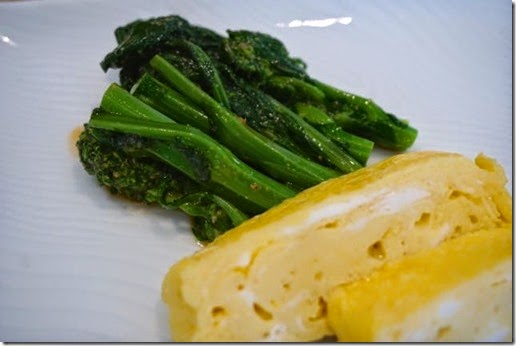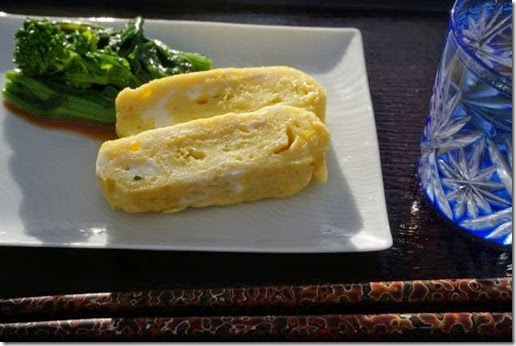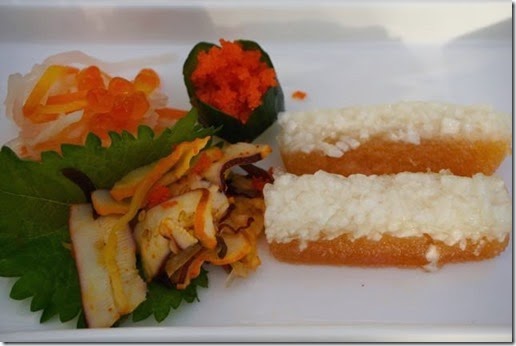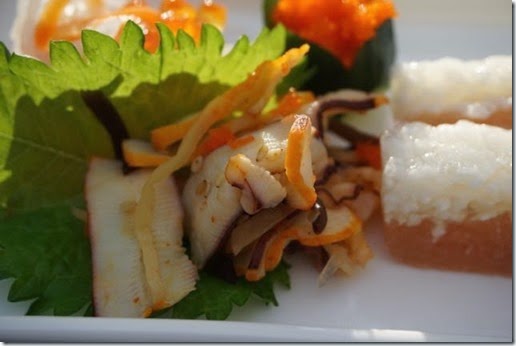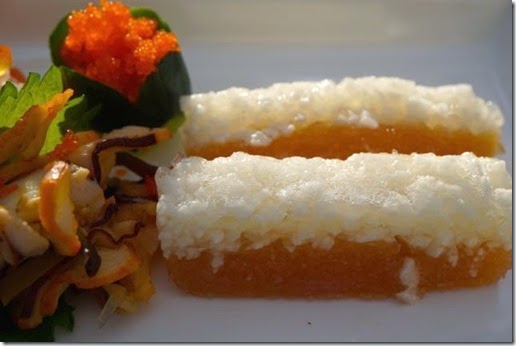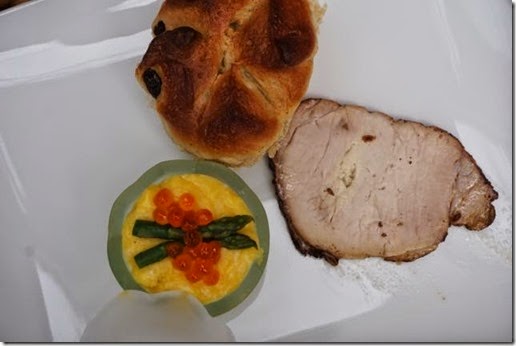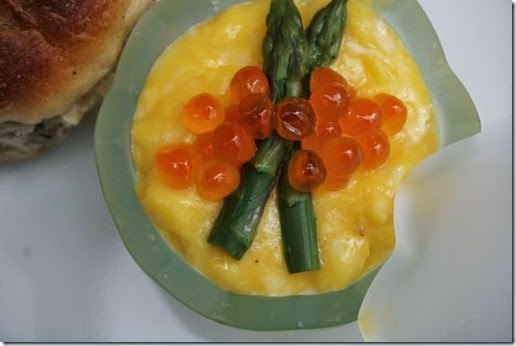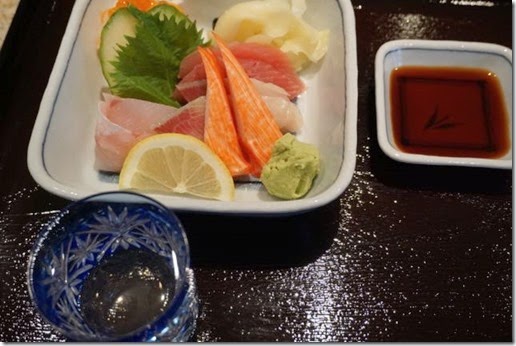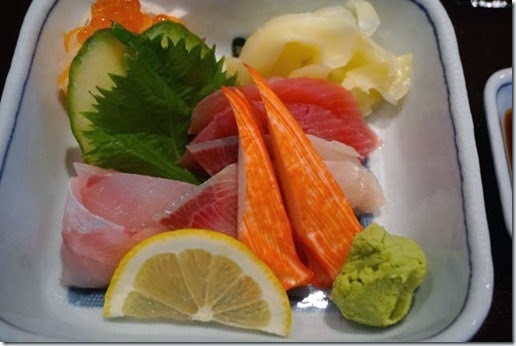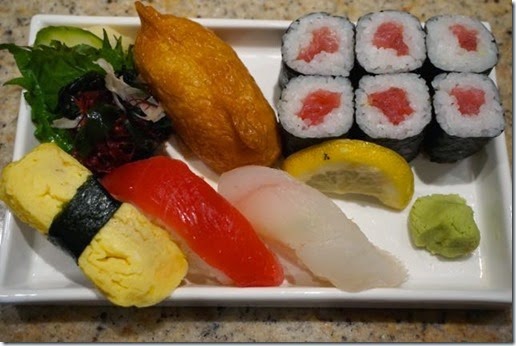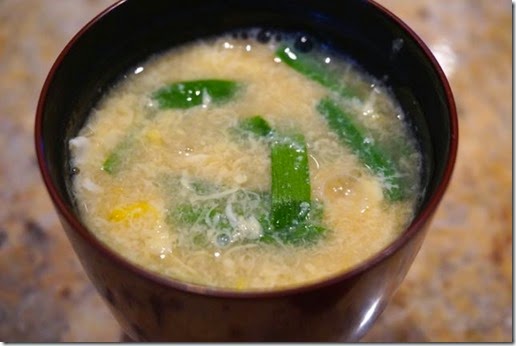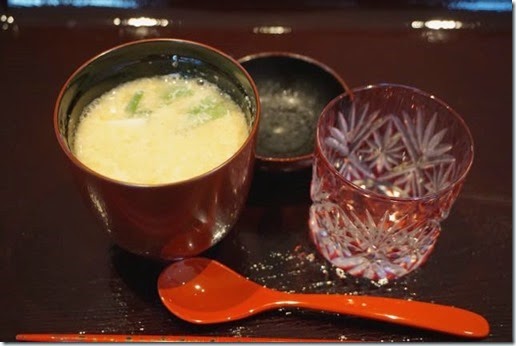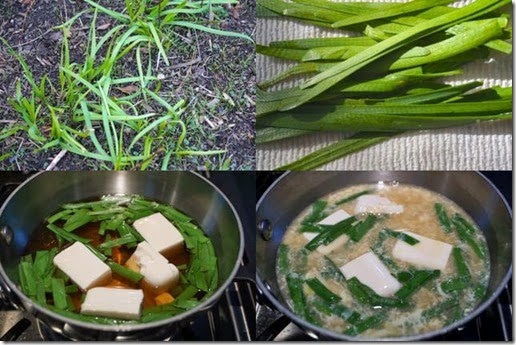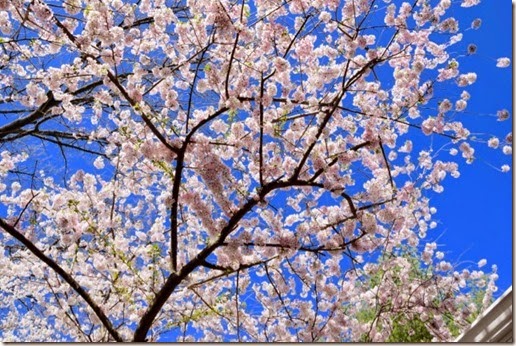
Our every day grocery store has a small fish section but I occasionally find something good and interesting. The fish monger and his assistant there now recognize me (although we are not yet on a first name basis). One Staurday, they had small red snappers or "ko-dai" 小鯛 which were scaled and cleaned but head and fins intact exactly as I like it. The size was much smaller than usual for red snapper and perfect for serving a whole fish per person. I splurged for two. I thought of either making shio-yaki 塩焼き(or salted and grilled) or nitsuke 煮付け(simmered in broth) and decide to go with the latter. As a side, I also cooked some tofu and scallion.
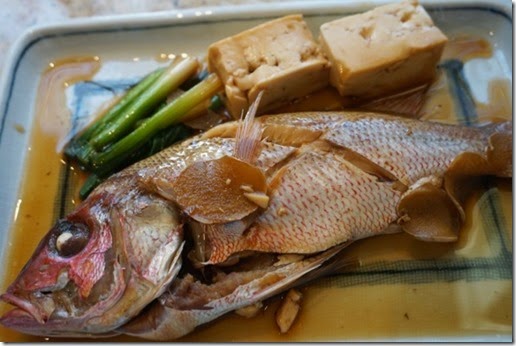
I served this for hanami 花見 on the second day.
 Preparation of the red snapper:
Preparation of the red snapper:
To remove the fishiness, if any, I first washed and removed the gills. Our fish monger did a good job of scaling and gutting the fish. I first boiled water in a frying pan large enough for the two red snappers to fit snugly. I placed both fish in the boiling water quickly turning them over (total of 10 seconds) and then plunged them into ice water, further washing any blood etc from the fish (#1).
Cooking broth (for cooking two red snappers below):
Water 200ml
Sake 100ml
Mirin 3 tbs
Soy sauce 3 tbs
Sugar 1 tbs
Ginger root: 6 thin slices.
Tofu and scallion (amount arbitrary).
The above seasoning is best for eating fish for sake but for eating it with rice, you may want to season it a bit more strongly (more soy sauce and sugar depending on your taste).
I scored the skin (in a cross cut) to prevent the skin from breaking during cooking and to allow better penetration of the flavor (#2).
1. I placed all the ingredients of the cooking broth in a frying pan.
2. As soon as the sugar melted, I put in the fish (#2). Covered it loosely with aluminum foil (or "
otoshibuta" 落としぶた) and let it come to a boil and immediately turned down the flame to simmer (#3). I continued cooking them for 30 minutes, occasionally spooning the broth over the fish (but not turning the fish over to avoid any breakage) (#4). (I stopped at this step several hours before serving. I kept it covered. I reheated and proceed cooking tofu and scallion just before serving).
3. I removed the fish to serving plates and kept them warm.
4. I turned up the flame and reduced the cooking broth a bit further and added cubes of tofu and scallion (white parts first and then green parts) and cooked them for several minutes. I turned the tofu few times).
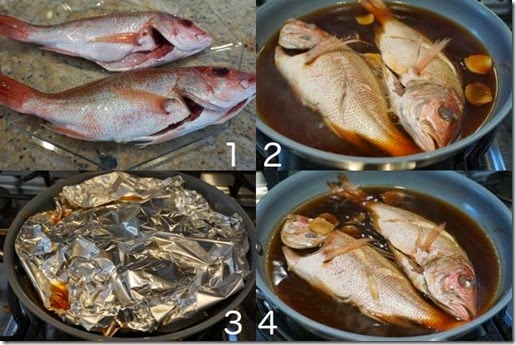
I served the fish with tofu and scallion and poured the reduced cooking broth over the fish. On a second look, I should have taken the pictures without the sauce. In any case, we both enjoyed the fish. Since they were small red snappers, there were lots of bones and required some jedi chop stick action which my wife is better at than I am when it comes to eating fish. She donated the fish eye balls of her fish to me. (Such offerings are the cementing foundation of a good relationship!) Just for the record, I do not eat the eye balls themselves just the gelatinous stuff behind the eyes.
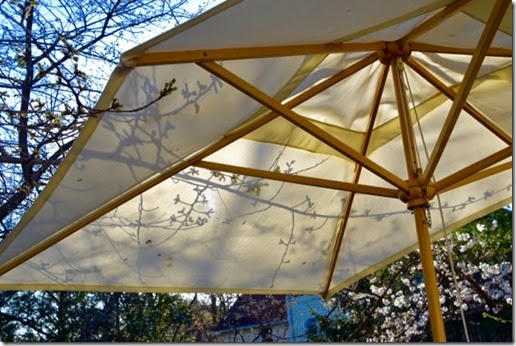
Although the fish were rather small it had lots of meat and we were getting filled up. We turned on the flood lights and went into night time cherry blossom gazing or "yozakura kenbutsu" 夜桜見物.










